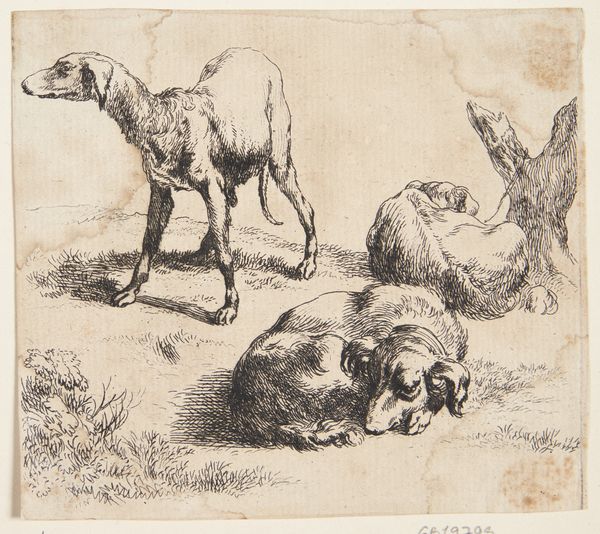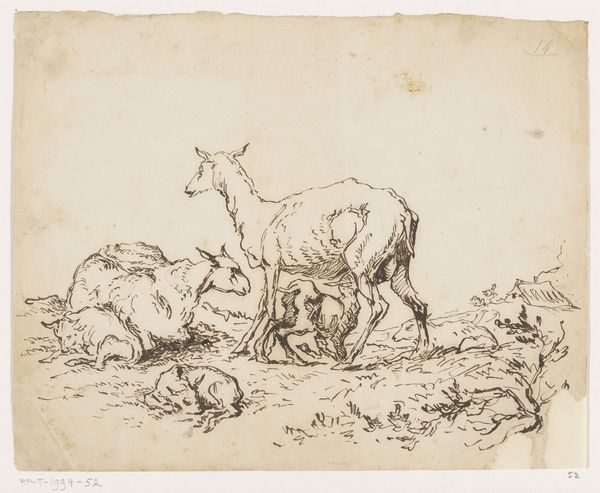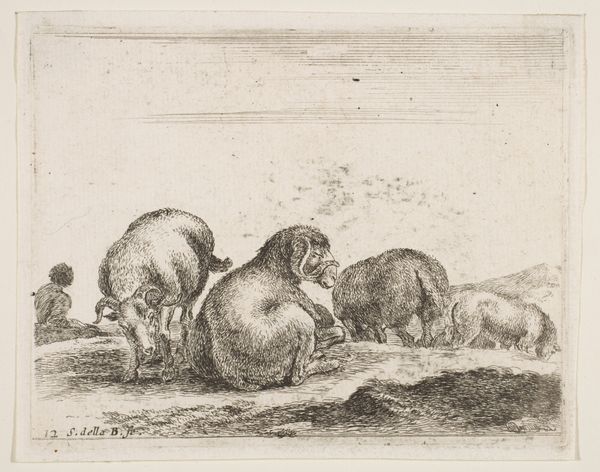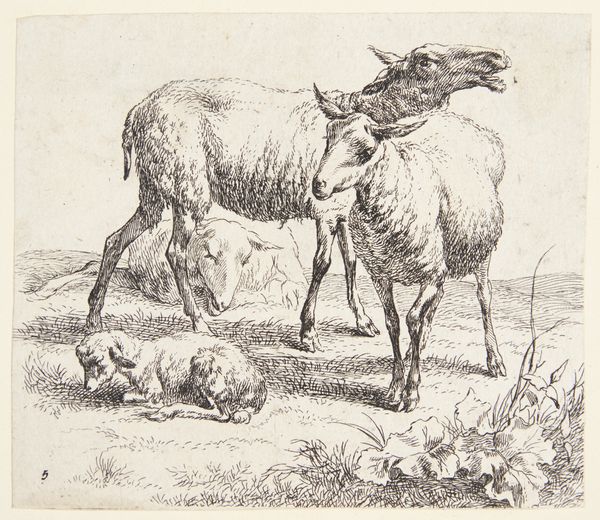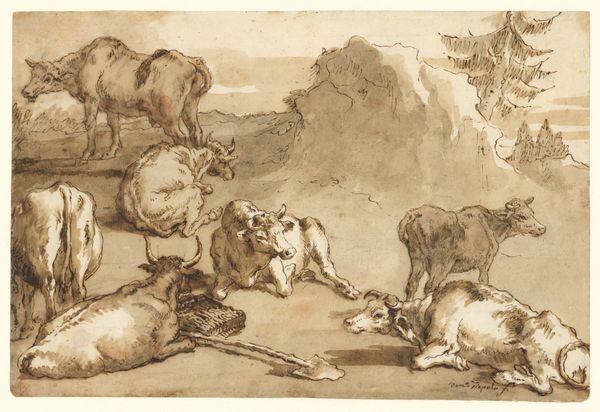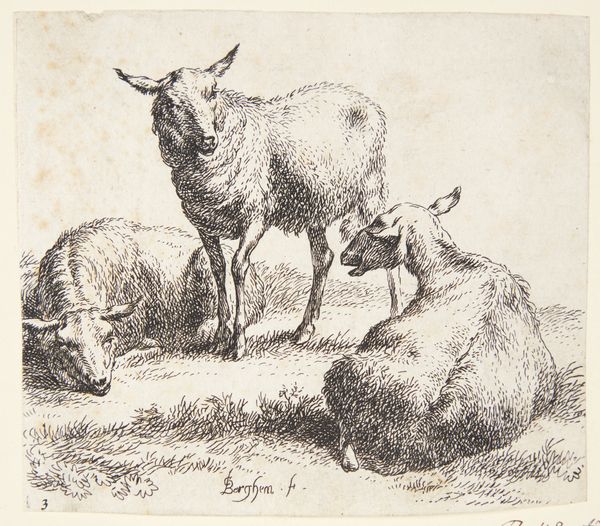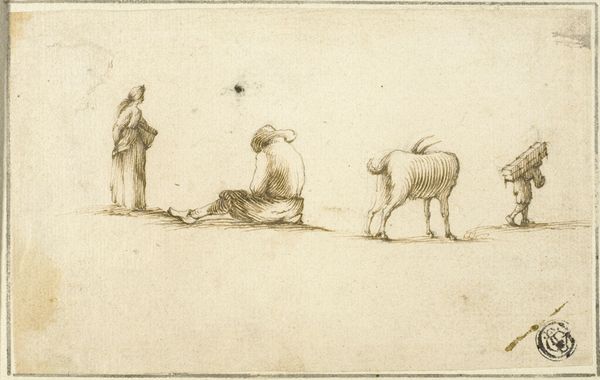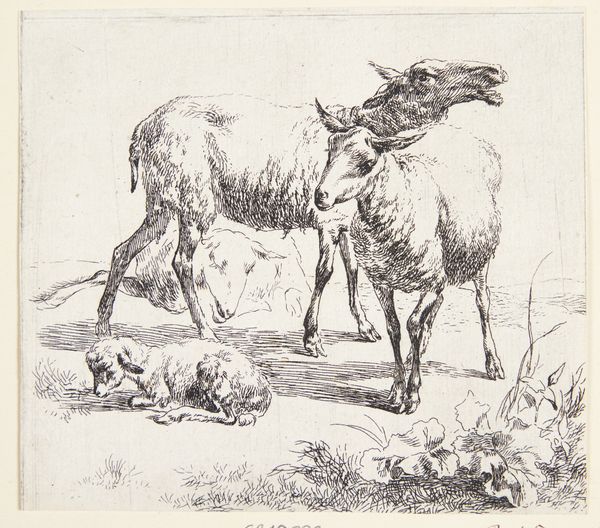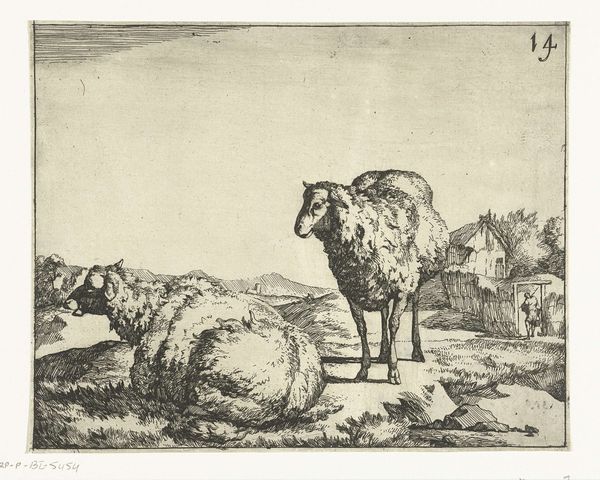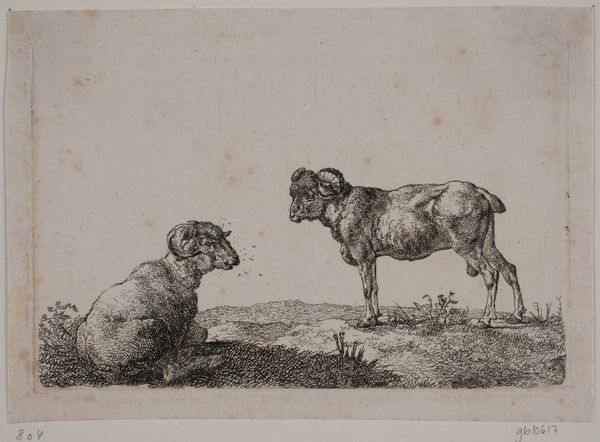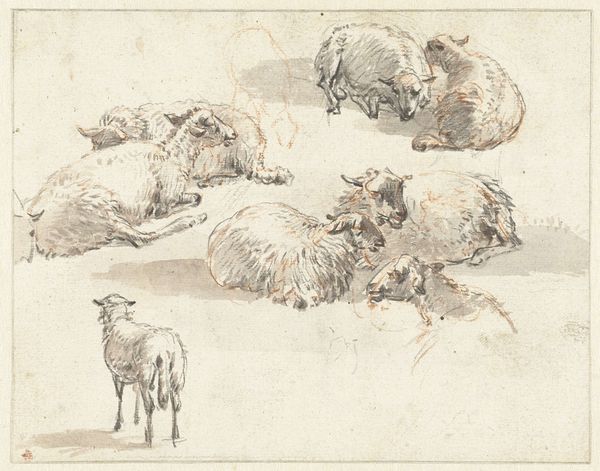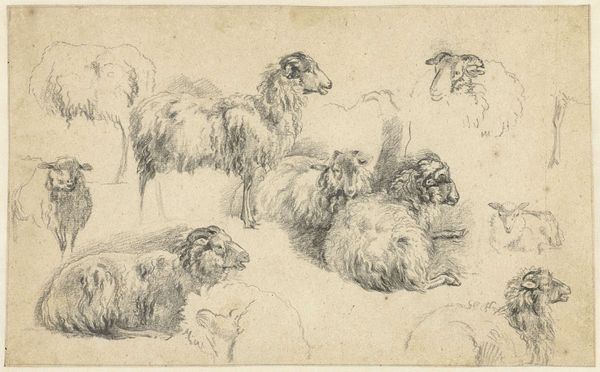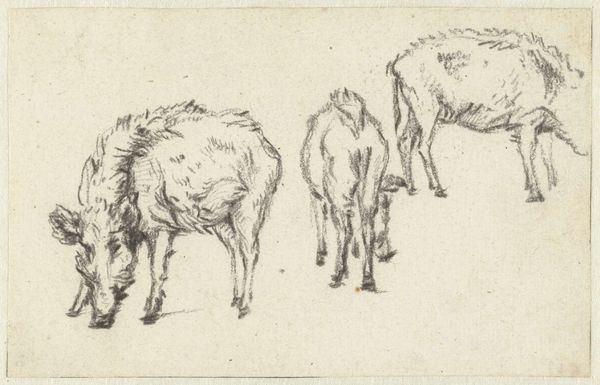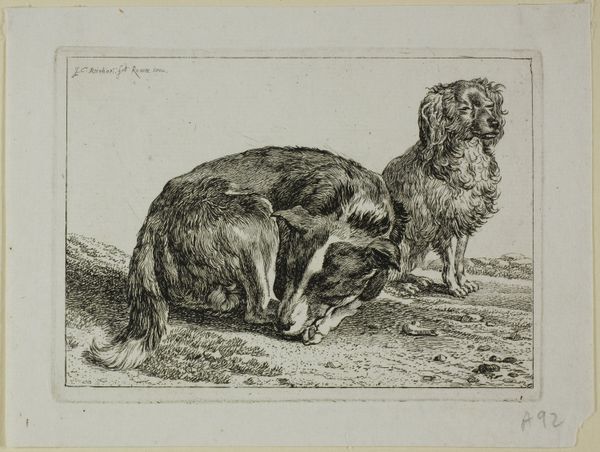
drawing, print, etching, ink
#
drawing
#
animal
# print
#
pen sketch
#
etching
#
landscape
#
ink
#
genre-painting
#
realism
Dimensions: 100 mm (height) x 112 mm (width) (plademaal)
Editor: Here we have Nicolaes Berchem's "Tre jagthunde," created sometime between 1620 and 1683. It's an ink and etching piece depicting three dogs in a field. I'm struck by how raw and almost sketch-like it feels, and the detail in the rendering of the dogs' fur. What’s your interpretation of this piece? Curator: Looking at this drawing, I immediately consider the etching process. The lines, created through acid biting into a metal plate, were crucial to reproduce and circulate images widely. How does Berchem's use of etching influence its value beyond just being a depiction of three dogs? Editor: That's a good point! Because it's reproducible, did that impact who had access to it at the time? Was it a democratizing force in art? Curator: Precisely! Consider the social context. Hunting was associated with the aristocracy. So, to mass produce images of hunting dogs… does this commodification and broader circulation alter our understanding of elite leisure? Editor: That’s fascinating. The drawing itself feels quite simple, almost like a study. But the process reveals a complex layer of accessibility and the economics of art production. Curator: Exactly. Think about the labor involved. The etcher's skill, the cost of materials – copper, ink, paper – these all played a role in the work's availability and reception. What might a materialist reading tell us about the shift in the social meaning of hunting when this image circulates beyond the halls of nobility? Editor: I hadn't considered it that way before. Thanks to thinking about the material and its production, this etching speaks to shifting social structures. Curator: Yes! It is an intriguing example of the intersection of art, labor, and consumption.
Comments
No comments
Be the first to comment and join the conversation on the ultimate creative platform.
